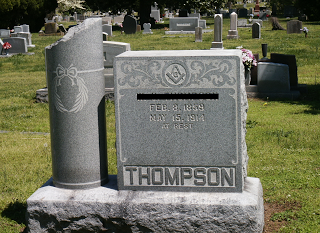Good example of how to create statues with masonic hidden in plain sight symbolism is found from the center of my home-country's capital Helsinki. In Kaisaniemi, there is the sculpture Eagles (Kotkia, 1913), by Bertel Nilsson.
Helsinki Art Museum introduction:
The sculpture depicts two eagles and is surrounded by a basin. One of the eagles is about to devour its prey while the other keeps a keen eye on the surroundings. The work is realistic, although the eagles' arrogant and smug expressiveness add humour to it. Nilsson has created an image of a cruel bird of prey, which looses its dangerousness and looks rather foolish despite its intimidating greatness. Originally, the work was placed in the Ateneum park, from where it was moved to its present location in 1974. The piece was completed in 1913 and it is cast in bronze.
For someone who doesn't know anything about masonic symbolism, this looks like a nice little sculpture of two big birds - nothing more. Those who have studied masonic symbolism, can spot two familiar masonic motifs.
If you have ever studied masonic symbolism, you probably know that one of the most well known symbols of Freemasonry is the double-headed eagle.
 |
| Masonic symbolism: double-headed eagle |
It's a very recognizable symbol, which you can't use as such in plain sight, if you wish to keep your message hidden from the uninitiated. So how do you make that reference without it being too obvious? You put two eagles side by side and put them on another masonic symbol - broken column.
 |
| Masonic symbolism: broken column |
 |
| Masonic art: Weeping Virgin and the broken column |
One must understand that when it comes to esoteric and exoteric symbolism, that division exists also inside the masonic brotherhood. The newcomers and low level masons, so called blue degrees (first three degrees), learn only the exoteric meanings of the masonic symbols. The esoteric level is kept secret and meant only for the ones high up in the hierarchy.
If you don't believe me, just read this quote from Morals and Dogma by the 33. degree mason Albert Pike.
"The Blue Degrees are, but the outer court or portico of the temple. Part of the symbols are displayed there to the initiate, but he is intentionally misled by false interpretations. It is not intended that he shall understand them, but it is intended that he shall imagine he understands them... The true explanation is reserved for the Adepts, the Princes of Masonry." - Albert Pike (Morals And Dogma)
The exoteric meaning of the broken column is about falling of a supporter of Freemasonry, meaning a death of a prominent member of the masonic society. That is the reason why so many broken columns can be seen on cemeteries.
"In Freemasonry, the broken column is, as Master Freemasons well know, the emblem of the fall of one of the chief supporters of the Craft. The use of the column or pillars as a monument erected over a tomb was a very ancient custom, and was a very significant symbol of the character and spirit of the person interred." - Masonic Dictionary
As said, that's only the exoteric level meant for the lower level masons. The esoteric meaning is about something else. It's a reference to the origins of masonry - ancient Egypt and the Cult of Aton. Broken column represents the lost empire of pharaoh Akhenaton. It refers to the destroyed city that was the symbol of Akhenaton's atonistic empire.
During his reign Akhenaton built a city for his sun god Aton (or Aten), called Akhetaten ('Horizon of the Aten'), or better known as Amarna. After the expulsion of pharaoh Akhenaton and the atonists, everything that reminded about the Cult of Aton was considered unholy and evil. People in Egypt hated Akhenaton and his deranged version of sun worship so much that they destroyed Amarna and leveled it on the ground.
Today, there are only ruins left of this once great city dedicated to Aton - and broken columns.
 |
| Broken column in Amarna |



















































